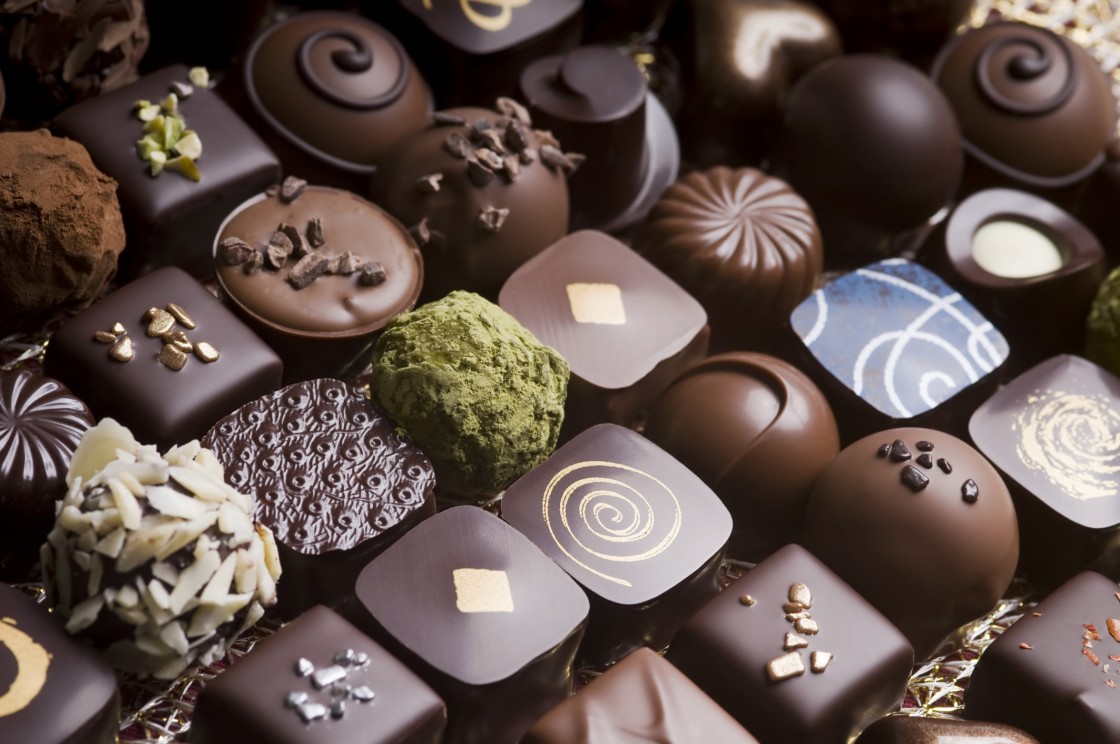LONDON, Ont. – Chocolate had nothing to do with Valentine’s Day until the mid-1800s, when British chocolate manufacturer Richard Cadbury designed the first decorative chocolate boxes as a marketing tool.

He would be dumbfounded to see how successful his idea became.
Statistics Canada indicates sales of chocolate and confectioneries made from cocoa beans totalled $110 million in Canada in February 2012. But that’s peanuts compared to the United States, where Valentine’s chocolate sales top $1 billion.
But not everyone wants pre-made products.
RECIPES: White chocolate decadence, ganache tart, chocolate ginger pudding
Michelle Chow, president of Vanilla Food Company in Markham, Ont. – one of the largest online distributors of baking chocolate in Canada – says she starts seeing a marked increase in orders for baking chocolate about three weeks before Valentine’s Day.
That’s when people who want to create “something special” for their loved ones are making their plans, she says. “I just can’t keep it in stock.”
In that regard, Valentine’s Day is second only to Christmas, Chow says.
Chocolate starts with football-sized pods on the cacao tree, grown in tropical climes around the world. Each pod contains up to 50 beans, generally slightly bigger than a large sunflower seed.
READ MORE: How to grow ‘chocolate’ for your Valentine
Gary Mitchell, head chocolatier at Purdys Chocolatier of Vancouver, says the beans go through various processes to produce “cocoa mass” and “cocoa butter,” which are used to make three basic kinds of chocolate.
Dark chocolate is simply cocoa mass, cocoa butter and sugar. Milk chocolate is cocoa mass, cocoa butter, sugar and milk solids. White chocolate has cocoa butter, sugar and milk solids, but no cocoa mass.
All three work well for home baking and in most applications, says Mitchell, who has been with Purdys since 1993, but who started his culinary career as a chef and in the baking industry.
It is important to read the ingredients list when buying baking chocolate and confections to ensure you’re getting good quality, he says.
“Cocoa butter is quite expensive so some chocolate makers add other oils (such as palm kernel oil) to cut costs. But pure chocolate is really just chocolate, sugar, milk.”
Chocolate squares or bars can be melted over warm water or in the microwave, he says.
“White chocolate and milk chocolate will scorch at anything above 120 F (49 C). Dark chocolate is a little more forgiving. It will go up to 140 F (60 C) before it scorches. So temperature is important.
“If you dilute it into a sauce, it’s not so bad. But on its own, you have to be very careful of what you’re melting. The chocolate starts to melt at about 80 F (27 C), so to have it completely melted, 90 F (32 C) is all you need.”
Therefore, even in a double boiler, the water should not be boiling.
To melt it in a microwave, cut the chocolate into small pieces, microwave for 30 to 45 seconds only, stop, stir and repeat, depending on how much you’re melting, he advises.
Another tip is that chocolate and water are not a good mix. So when combining chocolate with ingredients that contain water, such as wine, balsamic vinegar, fruit or vegetable purees, beer or coconut milk, do a simple reduction by gently boiling the liquid ingredient to evaporate the water content.
Combining cheese and chocolate also “can be a bit tricky” because of the moisture content. “Aways choose the (cheese) with the least amount” of moisture.
“You need to be as gentle as possible when melting the cheese and preparing it to be used in the chocolate. I usually warm up the cream or butter I am going to use to 120 F (49 C) and then fold in the room-temperature cheese until it is completely melted and emulsified with the other dairy products, then add in the chocolate,” Mitchell explains.
Oils and fats, however, work well with cheese, particularly coconut oil, which has a natural melting point a few degrees lower than chocolate. Clarified butter, also with a low melting point, softens chocolate and gives a “silky mouth feel” and you can use slightly less of it than other oils. Olive oil also is good.
“When using cream, the higher the fat content, the better,” Mitchell says.
Creams or oils can also be infused with fresh or dried spices such as basil, mint, tarragon, red chilies or lemon grass to bring an entirely new flavour to chocolate.
One final tip from Mitchell is that when using chocolate in a sauce, always add it just before serving, “so that the chocolate does not go grainy during prolonged heat.”
Mitchell says chocolate is a perfect match for Valentine’s Day because it contains a compound that “gives you that feeling of well-being. They call it the feeling of being in love.”
As a chocolatier, he makes more than 150 new types of chocolates a year, of which only about eight make it to the company’s shops. He also develops recipes using chocolate (including chocolate martinis) for e-books and makes videos about various aspects of chocolate.
Is this too much of a good thing?
“I’m eating chocolate all day long,” he says. “I love chocolate.”


Comments